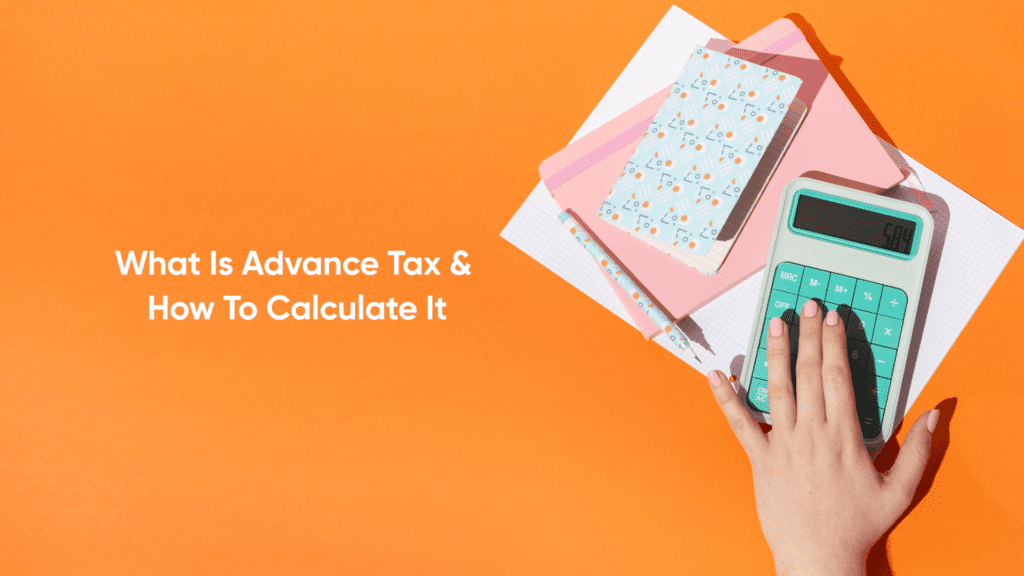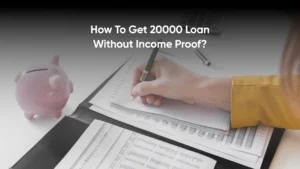What Is Advance Tax & How To Calculate It

Planning your taxes isn’t just a year-end task. It’s something you can manage throughout the year with advance tax payments. If your total income tax liability exceeds ₹10,000 in a financial year, the Income Tax Department requires you to pay it in installments instead of a lump sum at the end. This helps in reducing year-end burden and avoiding penalties.
With Zype, staying on top of your finances gets easier. Our tools help you track, plan, and stay compliant, so you never miss an important tax deadline. Smart planning today means smoother finances tomorrow.
Table of Contents
ToggleWhat is Advance Tax?
Advance tax is paid in installments throughout the year, not at the end. Whether you’re an individual or a company, calculating it correctly is key. Use our simple advance tax calculation format to plan your payments with ease. Just total your estimated income, apply the correct tax rate, minus TDS, and split it as per due dates. It’s that simple.
Advance tax is the income tax you pay in installments during the same financial year in which you earn the income. If your total tax liability exceeds ₹10,000 in a year, you’re required to pay it as advance tax instead of waiting until year-end. This applies to individuals, freelancers, and companies. You can adjust your payments if your income fluctuates and pay using tax challans at authorized bank branches or online through the Income Tax Department or NSDL portals.
Also Read: Smart Tax Planning for Young Earners: Navigating Finances In Your Twenties
Why is Advance Tax Important?
Paying advance tax is important for the following reasons:
- Reduces Penalties: When an individual delays in paying taxes, penalties are levied. Thus, paying an advance tax minimises any last-minute delays.
- Minimises Stress: It helps mitigate stress that a taxpayer may undergo while making tax payments at the end of the fiscal year.
- Fiscal Discipline: Individuals and businesses can keep better track of their income and expenses. They are in check with their earnings throughout the year instead of the end of the financial year.
- Increases Government Funds: It helps in raising government funds as the government receives interest on the tax collected.
- Avoid Shortage of Funds: If a taxpayer waits till the last date to pay taxes, they may fall short of funds. This again leads to penalties for late payments.
How to Calculate Advance Tax?
The steps to calculate advance tax are as follows:
- Estimate the total income earned by you other than your salary
- Deduct all expenses from your income, including medical insurance premiums, phone bills, travel expenses, etc.
- Add other income that you received apart from your salary. This includes interest from FDs, house rent, lottery winnings, etc.
- Compute tax on this income as per the regime selected
- Reduce the amount of tax paid by way of TDS/TCS
If the amount of tax calculated is more than 10,000, then you are liable to pay advance tax.
Here is An Example of Advance Tax Calculation of a Salaried Employee:
Ms Z, a salaried individual, earns a total salary income of Rs. 8,50,000 during the financial year 2023-24. She earns income from a savings account (interest). Ms Z estimates Rs. 18,000 towards TDS. She has earned Rs. 25,000 in interest from fixed deposits for the financial year. She deposits Rs. 75,000 towards her PPF account, Rs. 20,000 towards her LIC premium, and Rs. 12,000 towards her medical insurance premium.
Advance Tax Calculation Format
Here’s how to calculate advance tax in a simple step-by-step format:
Step 1: Estimate your total annual income (including salary, business income, interest, etc.).
Step 2: Deduct eligible exemptions and deductions (like Section 80C, 80D).
Step 3: Calculate your total taxable income.
Step 4: Compute total tax liability using the applicable slab rates.
Step 5: Subtract TDS (Tax Deducted at Source) already deducted.
Step 6: If the remaining tax is over ₹10,000, divide and pay as advance tax in quarterly installments.
Advance Tax Slab Old and New Regime
1. Old Tax Regime (with deductions)
Particulars | Amount (₹) |
Total Deductions (80C + 80D) | 1,07,000 |
Net Taxable Income | 7,78,000 |
Tax on ₹2.5L – ₹5L @ 5% | 12,500 |
Tax on ₹5L – ₹7.78L @ 20% | 55,600 |
Total Tax Before Cess | 68,100 |
Add: 4% Cess | 2,724 |
Total Tax Payable | 70,824 |
Less: Estimated TDS | 18,000 |
Advance Tax Payable | ₹52,824 |
You can claim deductions for EPF, LIC, medical insurance, etc.
New Tax Regime (no deductions)
Slab (FY 2025–26 New Regime) | Tax Rate |
Up to ₹3,00,000 | Nil |
₹3,00,001 – ₹6,00,000 | 5% = ₹15,000 |
₹6,00,001 – ₹9,00,000 | 10% on ₹2.85L = ₹28,500 |
Total Tax Before Cess | ₹43,500 |
Add: 4% Cess | ₹1,740 |
Total Tax Payable | ₹45,240 |
Less: Estimated TDS | ₹18,000 |
Advance Tax Payable | ₹27,240 |
Deductions like 80C/80D are not available under the new regime.
Advance Tax Due Dates for FY 2025–26
If your estimated tax liability exceeds ₹10,000 for FY 2025–26, you must pay advance tax in four installments as per the following schedule:
By 15 June 2025 – 15 % of total tax liability
By 15 September 2025 – 45 % cumulative
By 15 December 2025 – 75 % cumulative
By 15 March 2026 – 100 % cumulative
Ensure timely payments to avoid interest under Sections 234B and 234C for shortfalls or delays
Which forms are Required in Advance Tax?
Challan No. ITNS 280 is a form that has to be filled in on the given due dates. Prerequisites of Challan No. ITNS 280 are as below:
- Permanent Account Number (PAN) Details: It is important to give correct PAN details. If you fail to do so, your tax will be deposited in someone’s name.
- Assessment Year: Since your tax is being paid in advance for the upcoming financial year, make sure you select the appropriate assessment years for which you will make the payment.
- Selecting the Payment Type: The taxpayer needs to select the payment type in the form. If the tax is paid for the same financial year based on estimated income, it will be advance tax. On the other hand, if the tax is paid after the completion of the financial year, it is considered a self-assessment tax.
Once the payment is made, a Challan Identification Number (CIN) will be issued. The taxpayer needs to keep a note of this number and use it while filing the Income Tax Return (ITR). Additionally, you need to verify whether the income tax department has received the online payment.
Also Read: What is Form 16? Differences Between Form 16, Form 16A, 16B
Benefits of Paying Advance Tax
Paying advance personal loan tax benefits both the taxpayers and the government.
- Reduces Tax Evasion: Advance tax requires that a taxpayer estimate their income and pay taxes as per that. This discourages tax evasion tactics and ensures tax compliance.
- Encourages Fiscal Discipline: Paying advance tax requires the taxpayer to keep track of their income and expenses. This encourages efficiency in filing taxes, thereby reducing penalties.
- Relieves Taxpayer: Instead of paying tax at the end of the fiscal year, a taxpayer has the option to pay advance tax in instalments. Thus, the taxpayer doesn’t have to pay the entire tax amount at once, thereby reducing penalties and added stress.
- Better Cash Flow: Advance tax payments aid in better cash flow since payments are made throughout the year. This helps to maintain liquidity and fulfil other financial obligations.
Penalties for Non-Payment of Advance Tax
Non-payment or delay will attract penalties for advance tax.
1. Non-Payment of Advance Tax will Attract Interest Under 234B: As per Section 234B, you must pay at least 90% of the total taxes as advance tax or TDS/TCS by 31st March. Failure to make advance tax payments will result in an interest of 1% on the unpaid amount.
2. Delay in Payment of Advance Tax will Attract Interest Under 234C: If there is a delay in payment of advance tax, under section 234C, you are liable to pay interest charges as below:
- If the advance tax paid by June 15th is less than 15% of the total tax liability, a monthly interest rate of 1% applies for three months. This is calculated based on 15% of the total tax liability minus any tax paid before June 15th.
- If the advance tax paid by September 15th is less than 45% of the total tax liability, the same 1% monthly interest rate applies for three months. This calculation is based on 45% of the total tax liability minus any tax paid before September 15th.
- If the advance tax paid by December 15th is less than 75% of the total tax liability, the interest rate remains 1% per month for three months. This is determined by calculating 75% of the total tax liability minus any tax paid before December 15th.
- Lastly, if the advance tax paid by March 15th is less than 100% of the total tax liability, a 1% monthly interest rate applies for one month. This calculation is based on 100% of the total tax liability minus any tax paid before March 15th.
Also Read: Penalty For Late Filing of ITR: Everything You Need to Know
How to Pay Advance Tax Online
Follow this guide for advance tax payment online:
Step 1: Go to the e-filing portal of the I.T. Department of India.
Step 2: Click on ‘e-pay Tax’ under ‘Quick Links’.
Step 3: Enter ‘PAN’ and ‘Mobile Number’ and proceed to click on ‘Continue’.
Step 4: Fill out the received ‘OTP’ and next click on ‘Proceed’.
Step 5: Choose the First Tab that says ‘Income Tax’ Option and then click on ‘Continue’.
Step 6: Choose the ‘Assessment Year’ and ‘Type of Payment’ as ‘Advance Tax (100)’. Press ‘Continue’.
Step 7: Fill out all the details about tax.
Step 8: Select the relevant mode of payment and the bank and proceed to click on ‘Continue’.
Step 9: Get a preview of the challan and then press the ‘Pay Now’ button.
Step 10: Once the payment is completed, an acknowledgement will appear on the following screen. The BSR code and challan serial number will be displayed on the challan’s right side. Ensure to get a copy of this receipt since the stated BSR code and challan number will be required in tax return.
Those who are not comfortable with the online advance tax payment method may use the offline payment facility by submitting the challan at the I.T. Department authorized bank branches.
Conclusion
Understanding advance tax payment is crucial for any taxpayer. It ensures tax regulation compliance and fiscal discipline in individuals and businesses alike. Moreover, paying advance tax in instalments aids in cash flow and minimises penalties on late payments. Advance tax aids the government in receiving a steady flow of funds throughout the year. This helps them give insights on budgeting and planning public expenditures like infrastructure projects, social welfare programs that benefit the society at large.
Frequently Asked Questions
How To Check Advance Tax Payment Status?
Go to https://tin.tin.nsdl.com/oltas/index.html. Select CIN (Challan Identification Number) Based View. Then enter the required details and view the status.
Can I Pay The Advance Tax At A Bank Branch?
Yes, you can pay advance tax at a bank branch authorised by I.T. Department.
Are People Over The Age Of 60 Exempt From Paying Advance Tax?
People over the age of 60 who are not salaried employees are exempt from paying advance tax. However, if a person is over 60 and owns a business, they are liable to pay advance tax.
What Happens If The Advance Tax Paid Exceeds The Entire Tax Liability?
You can file for a tax refund by declaring your investments in Form 16 (life insurance premiums paid, house rent being paid, investments in equity/NSC/mutual funds, bank FDs, tuition fees, etc.) when you file an IT return and submit the necessary proofs.
If you’ve failed to do so, you can fill out Form 30. Form 30 is a request for your case to be looked into and the excess tax that you have paid is refunded. Your income tax refund claim needs to be submitted before the end of the financial year.
Is There A Cap On How Much Advance Tax Must Be Paid?
Up to 15% of advance tax can be paid on or before 15th June in a given financial year.
What Is The Difference Between TDS And Advance Tax?
TDS is deducted by an employee on salary and disbursed, whereas advance tax is paid by a taxpayer in instalments based on estimated annual income.
Do I Need To Pay Advance Tax On Fd Interest?
Yes, you need to pay advance tax on earnings received through FD interest.
What Is The 90% Rule For Advance Tax?
The rule means if one has not paid any tax for an assessment year, or paid less than 90% of the advance tax due, then they have to pay 1% simple interest on the tax dues.
YOU MAY ALSO LIKE


Search by posts
Recent post
Categories
- Blog (6)
- Credit History (37)
- Credit Line (7)
- Festive (4)
- Finance (15)
- Mutual Fund (19)
- Personal Loan (297)
- Tax (8)
- Zype (4)












